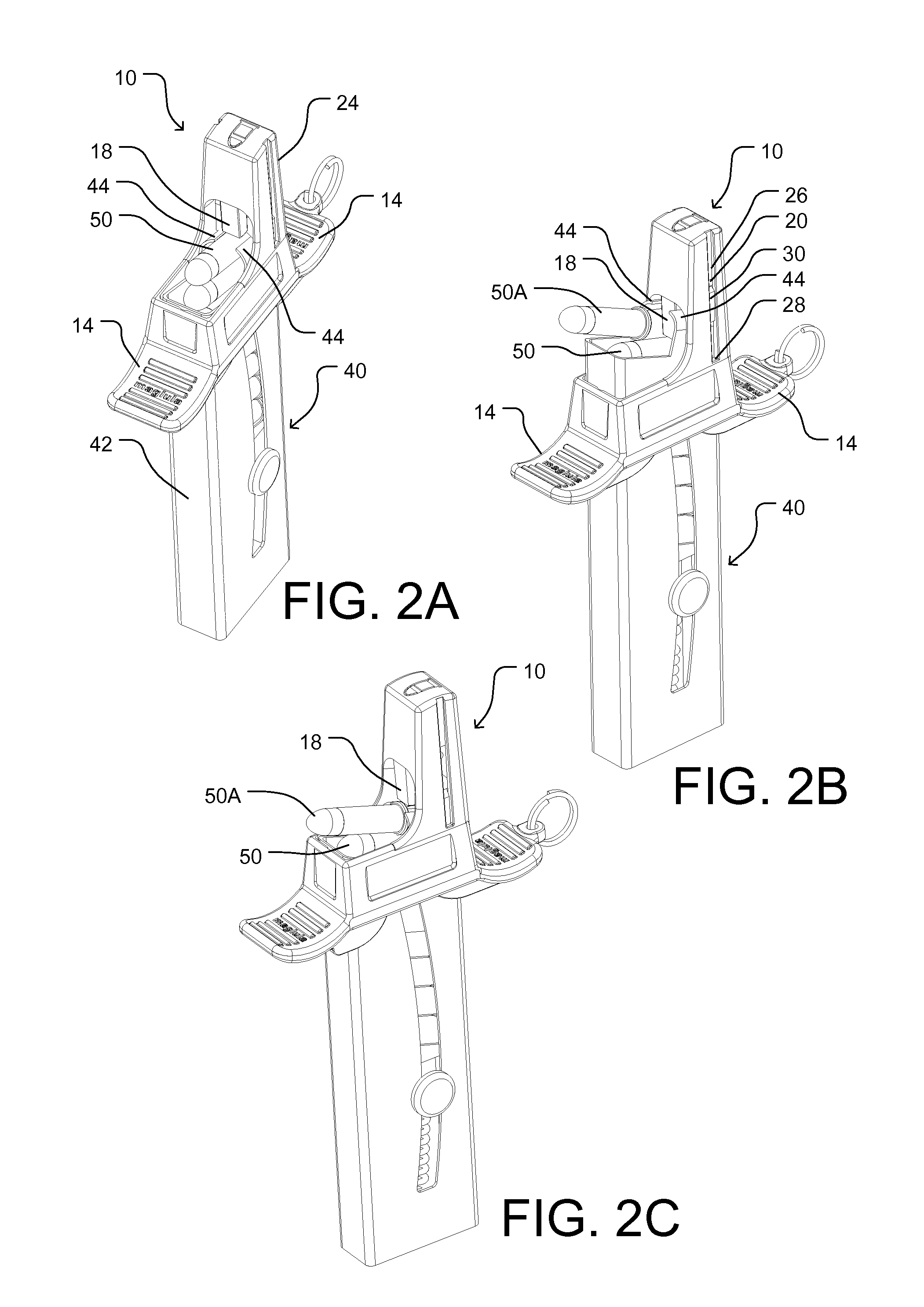Self-raising magazine loader
a self-raising, magazine-loading technology, applied in the direction of ammunition loading, weapon components, weapons, etc., can solve the problems of slowing down the loading process, wasting time, and tedious practice if done with bare fingers, so as to reduce the pain and increase the load
- Summary
- Abstract
- Description
- Claims
- Application Information
AI Technical Summary
Benefits of technology
Problems solved by technology
Method used
Image
Examples
second embodiment
Operation—Second Embodiment
FIGS. 3A-3D
[0072]The operation of loader 60 is similar to that of loader 10. The loader is self-raising once the user releases force on the loader. This eliminates the need to raise the loader up to clear tooth 68 from between lips 94 of the magazine. Since the loader body is relatively large, the user has a good grip on the loader for comfortable loading, using no finger rests.
third embodiment
FIGS. 4A-4D—Pusher Is Spring
[0073]FIGS. 4A to 4D are perspective views of a second alternative loader 100 comprising only two parts—a body and spring; no magazine pusher element is provided. Loader 100 is seen from various angles, with FIGS. 4A and 4B showing the loader from above and right and FIGS. 4C and 4D from below and front. The loader is shown, as an example, for loading high-capacity Ruger 10 / 22 .22LR style magazines 130 having a body 132 and feed lips 134. Loader 100 is slightly different from loaders 10 and 60 in that its spring serves to push the magazine directly. Thus the loader has two main parts, a body with a rounds tooth or plunger and a spring. The spring shown is a compression spring. The method of loading and principles of operation are similar. Loader 100 has a body 102 with a chamber 106 and a rounds plunger tooth 108. The loader has no pusher element (20 or 70 in FIGS. 1B and 3B). Instead the loader uses only a pusher spring 122 with two ends. The spring's up...
PUM
 Login to View More
Login to View More Abstract
Description
Claims
Application Information
 Login to View More
Login to View More - R&D Engineer
- R&D Manager
- IP Professional
- Industry Leading Data Capabilities
- Powerful AI technology
- Patent DNA Extraction
Browse by: Latest US Patents, China's latest patents, Technical Efficacy Thesaurus, Application Domain, Technology Topic, Popular Technical Reports.
© 2024 PatSnap. All rights reserved.Legal|Privacy policy|Modern Slavery Act Transparency Statement|Sitemap|About US| Contact US: help@patsnap.com










